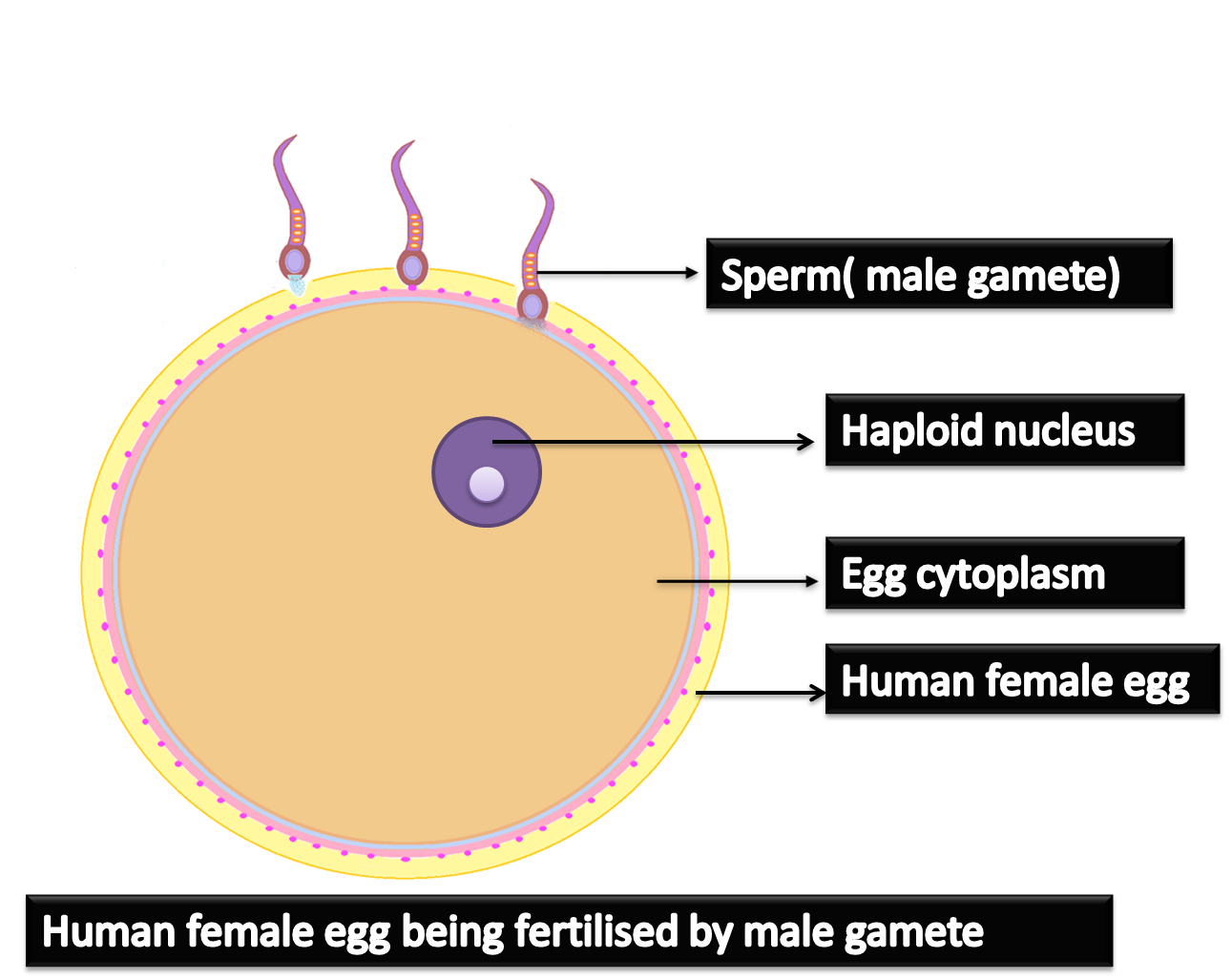
The smallest animal egg is that of:
(a) Ostrich
(b) Human female
(c) Duck
(d) Hen
Answer
485.4k+ views
Hint: The smallest animal cell also contains the smallest percentage of yolk because it exhibits an alternate main supply of nutrients to the developing embryo. Also, in the organism in which it is found, it is the largest of all the cells.
Complete step-by-step answer:
Human egg is barely over 0.1mm or 100µm in diameter. It is the smallest egg cell. In general, eggs are large-sized cells because they store food for the development of the embryo. Avian (birds)eggs are the largest. They are in centimetres. Among them, the ostrich egg is the largest and weighs around 1.3 kg.

Additional Information:
In birds such as ostrich, duck and hen, after internal fertilisation, the eggs are released from the female’s body. They are laid in a nest. After birds have laid their eggs, they keep the eggs warm through their body heat. This process is known as incubation. It is necessary for proper and complete development of the embryo in the eggs. The yolk which occupies a major portion in avian eggs provides nourishment to the embryo. Also, many minute semi-permeable pores are present on the shell for the exchange of gases as well as moisture to prevent desiccation of the eggs.
The human egg is also known as an ovum. It is the largest cell in a human body and can be seen with the naked eye. After internal fertilization in the female’s body, a zygote is formed. After a series of divisions, an embryo is formed which gets embedded in the uterus of the female. Human egg cell does not contain much yolk as the nutrients of the embryo is fulfilled from the mother via the placenta.
So, the correct answer is ‘Human female.’
Note: In reptiles, insects and birds, an egg is a fertilized zygote and is released from the mother’s body with little or no development at all. Such types of animals are known as oviparous animals. They lay eggs with hard calcareous shells to protect the embryo from predators as well as to survive extreme habitats or environments. In contrast, viviparous animals are the ones in which the embryonic development of the young ones takes place inside the mother’s body, specifically in her uterus.
Complete step-by-step answer:
Human egg is barely over 0.1mm or 100µm in diameter. It is the smallest egg cell. In general, eggs are large-sized cells because they store food for the development of the embryo. Avian (birds)eggs are the largest. They are in centimetres. Among them, the ostrich egg is the largest and weighs around 1.3 kg.

Additional Information:
In birds such as ostrich, duck and hen, after internal fertilisation, the eggs are released from the female’s body. They are laid in a nest. After birds have laid their eggs, they keep the eggs warm through their body heat. This process is known as incubation. It is necessary for proper and complete development of the embryo in the eggs. The yolk which occupies a major portion in avian eggs provides nourishment to the embryo. Also, many minute semi-permeable pores are present on the shell for the exchange of gases as well as moisture to prevent desiccation of the eggs.
The human egg is also known as an ovum. It is the largest cell in a human body and can be seen with the naked eye. After internal fertilization in the female’s body, a zygote is formed. After a series of divisions, an embryo is formed which gets embedded in the uterus of the female. Human egg cell does not contain much yolk as the nutrients of the embryo is fulfilled from the mother via the placenta.
So, the correct answer is ‘Human female.’
Note: In reptiles, insects and birds, an egg is a fertilized zygote and is released from the mother’s body with little or no development at all. Such types of animals are known as oviparous animals. They lay eggs with hard calcareous shells to protect the embryo from predators as well as to survive extreme habitats or environments. In contrast, viviparous animals are the ones in which the embryonic development of the young ones takes place inside the mother’s body, specifically in her uterus.
Recently Updated Pages
Master Class 11 Accountancy: Engaging Questions & Answers for Success

Glucose when reduced with HI and red Phosphorus gives class 11 chemistry CBSE

The highest possible oxidation states of Uranium and class 11 chemistry CBSE

Find the value of x if the mode of the following data class 11 maths CBSE

Which of the following can be used in the Friedel Crafts class 11 chemistry CBSE

A sphere of mass 40 kg is attracted by a second sphere class 11 physics CBSE

Trending doubts
10 examples of friction in our daily life

Difference Between Prokaryotic Cells and Eukaryotic Cells

State and prove Bernoullis theorem class 11 physics CBSE

What organs are located on the left side of your body class 11 biology CBSE

Define least count of vernier callipers How do you class 11 physics CBSE

The combining capacity of an element is known as i class 11 chemistry CBSE




